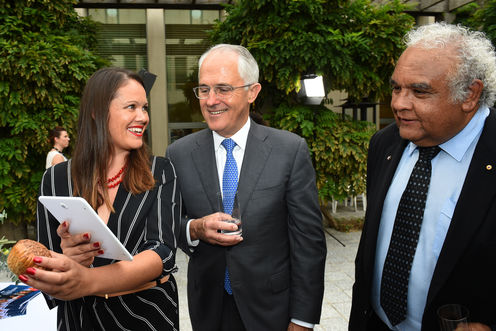
There is a stain on Australia that past generations have failed to remove. It is the entrenched divide between non-Indigenous Australians and our First Peoples, who continue to be denied the most basic human right to health equality and old age.
The unacceptable health and life expectancy gap between Indigenous and non-Indigenous Australians is what led me to establish the Close the Gap Campaign ten years ago.
Gaining traction
When I presented the 2005 Social Justice Report to parliament, the health indicators for Indigenous people were terrible, right across the board.
The life expectancy for the First Peoples of one of the richest countries in the world was at a third-world level. With a gap of 17 years, we were ten years worse-off in life expectancy terms than our Indigenous brothers and sisters in New Zealand, Canada and the US, where the gap was only six to seven years.
There was also a disconnect between government commitments to Indigenous peoples and the inadequacy of the funding and resources provided to meet those commitments.
The words I said ten years ago still resonate today:
It is not credible to suggest that one of the wealthiest nations in the world cannot solve a health crisis affecting less than 3% of its citizens.
The formation of the Close the Gap Campaign in March 2006 has provided ongoing focus and scrutiny on the health inequalities faced by Indigenous Australians.
The campaign has since grown. A steering committee comprised of more than 40 Indigenous and mainstream health peak bodies and advocacy organisations – all committed to creating change and using their own resources, not governments’ – now works to achieve it.
The Council of Australian Governments’ response to the 2005 Social Justice Report in December 2007 was welcomed – as was the pledge of A$1.6 billion in funding to fight chronic disease in November 2008.
The campaign continues to provide advice to governments through its Progress and Priorities report. This is independent of the prime minister’s Closing the Gap report.
As outlined in this year’s report, Indigenous men have a life expectancy of 69.1 years, which is nearly ten years less than for non-Indigenous men. Indigenous women have a life expectancy of 73.7 years, which is nearly 9.4 years less than for non-Indigenous women.
For those dismayed by a seemingly slow pace of change, the report cautions against impatience. Due to lead times between the design and roll-out of programs, measurable improvements to Indigenous life expectancy should not be expected until at least 2018.
This achievement will only be realised if policy stability, funding certainty, long-term commitments and meaningful and respectful engagement and empowerment of Indigenous peoples prevail.
Glimpses of hope
Despite recent pessimism, there is reason for hope and optimism.
Since 2009, we have seen improvements in infant and child health outcomes, a gradual reduction in smoking rates, significant increases in the number of health checks conducted and increased access to medicines.
We are also seeing improved outcomes in Year 12 completions and higher education commencements – both key determinants of health.
We have the building blocks in place to see the health outcome gaps close in the next 15 years. But we need to redouble our efforts if we are to achieve existing targets and include additional targets for justice and mental health.
Over the past ten years, governments have certainly shown good faith in terms of making new commitments, including specific targets to focus efforts, and backing that up with some new and significant funding. However, all governments must re-commit and re-energise their efforts to the Closing the Gap initiative.
Australia’s key health services and programs – particularly those from the community-controlled health sector – are still crying out for funding certainty to allow them to deliver the services they are best placed to provide. In uncertain economic times, when governments face pressure to adequately support all the services we demand in our modern democratic society, we must remember that health is a basic and fundamental human right.
In order to achieve a complete closing of the life expectancy gap by 2030, we require a renewed, redoubled and quarantined commitment to the cause. We demand of parliament long-term, bipartisan support and a renewed relationship with Indigenous peoples. Indigenous Australians must continue to lead this process, with support from government.
The implementation plan for the National Aboriginal and Torres Strait Islander Health Plan (2013-2023) is a good policy plank to provide impetus and direction. The plan was developed in collaboration between Indigenous health leaders in the National Health Leadership Forum and the government.
The partnership approach to developing the plan is a positive model for policy engagement with Indigenous people. It is a model that can be translated to address all the determinants of health, across all portfolios of government.
The groundwork of the implementation plan must now be furnished with the right resources. We need strong commitment from government and policy stability to see the plan through.
Australia is a great country with a lot of promise and potential. While a stain remains in the form of health inequality, this generation certainly has the opportunity to remove it. The resilience and the strength of Indigenous peoples will not be fully appreciated and realised until we give them a fair and equitable shot at leading full and healthy lives.
Tom Calma is Founder of the Close the Gap Campaign, Chancellor of the University of Canberra, Patron and Chair of the Poche Indigenous Health Network and Co-Chair of Reconciliation Australia.
